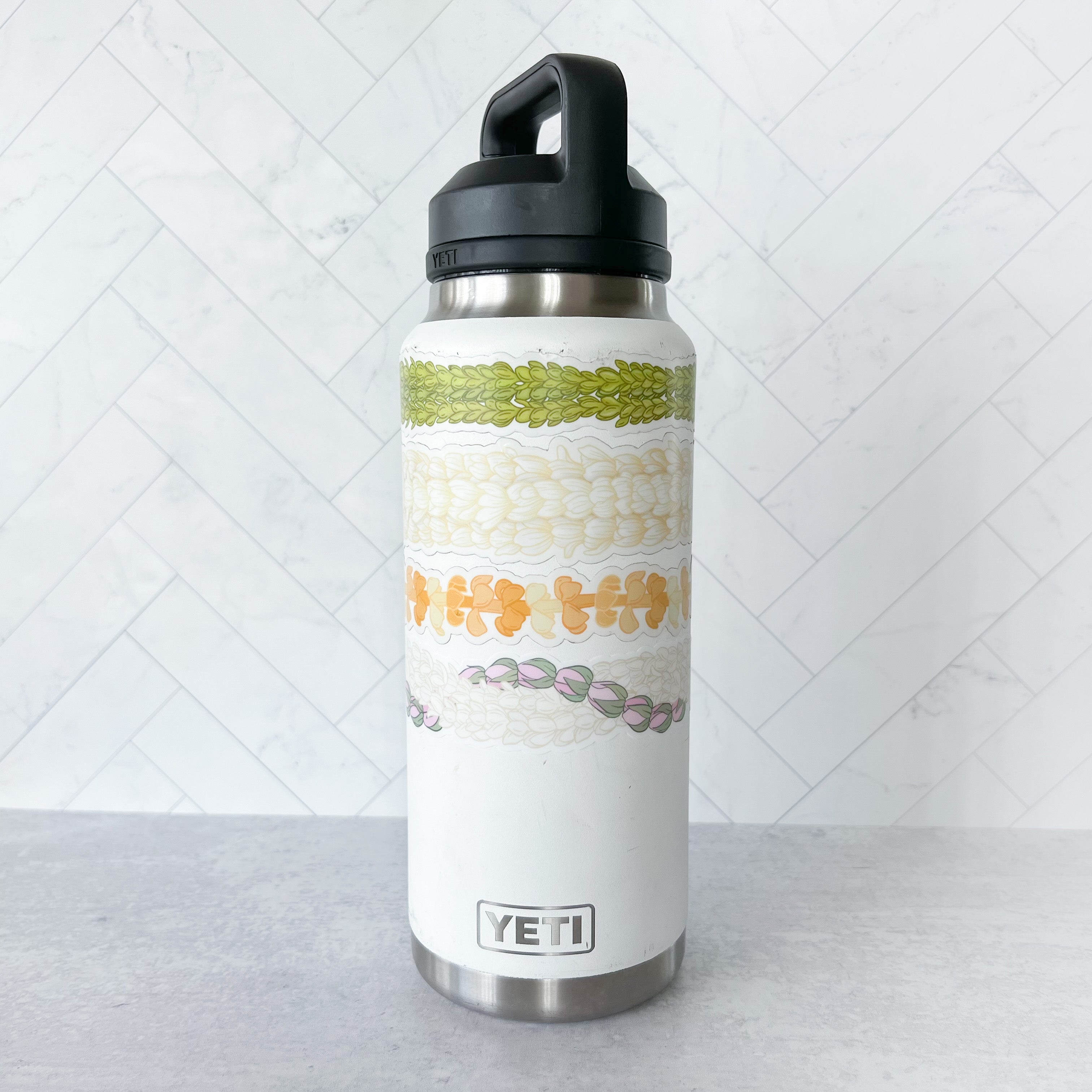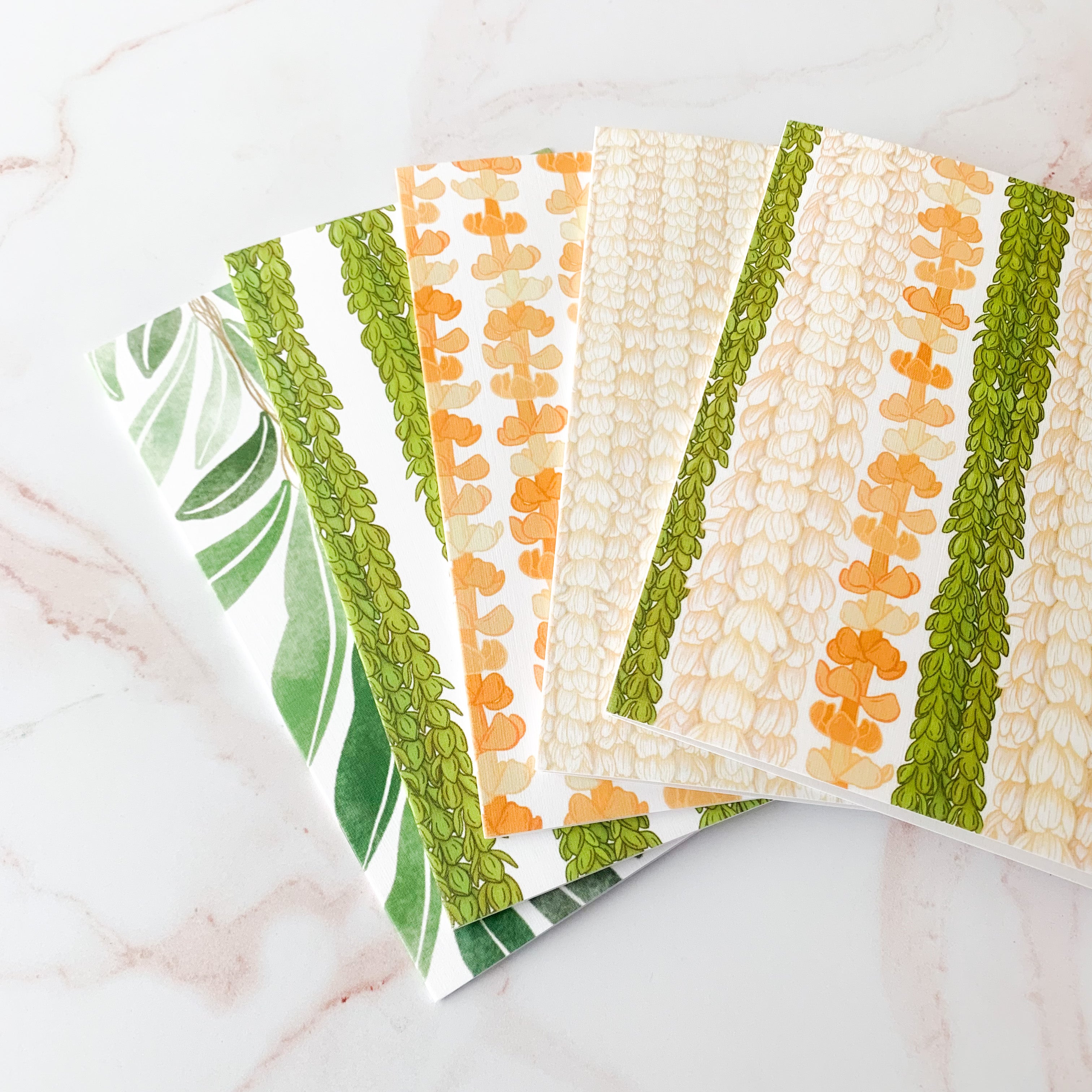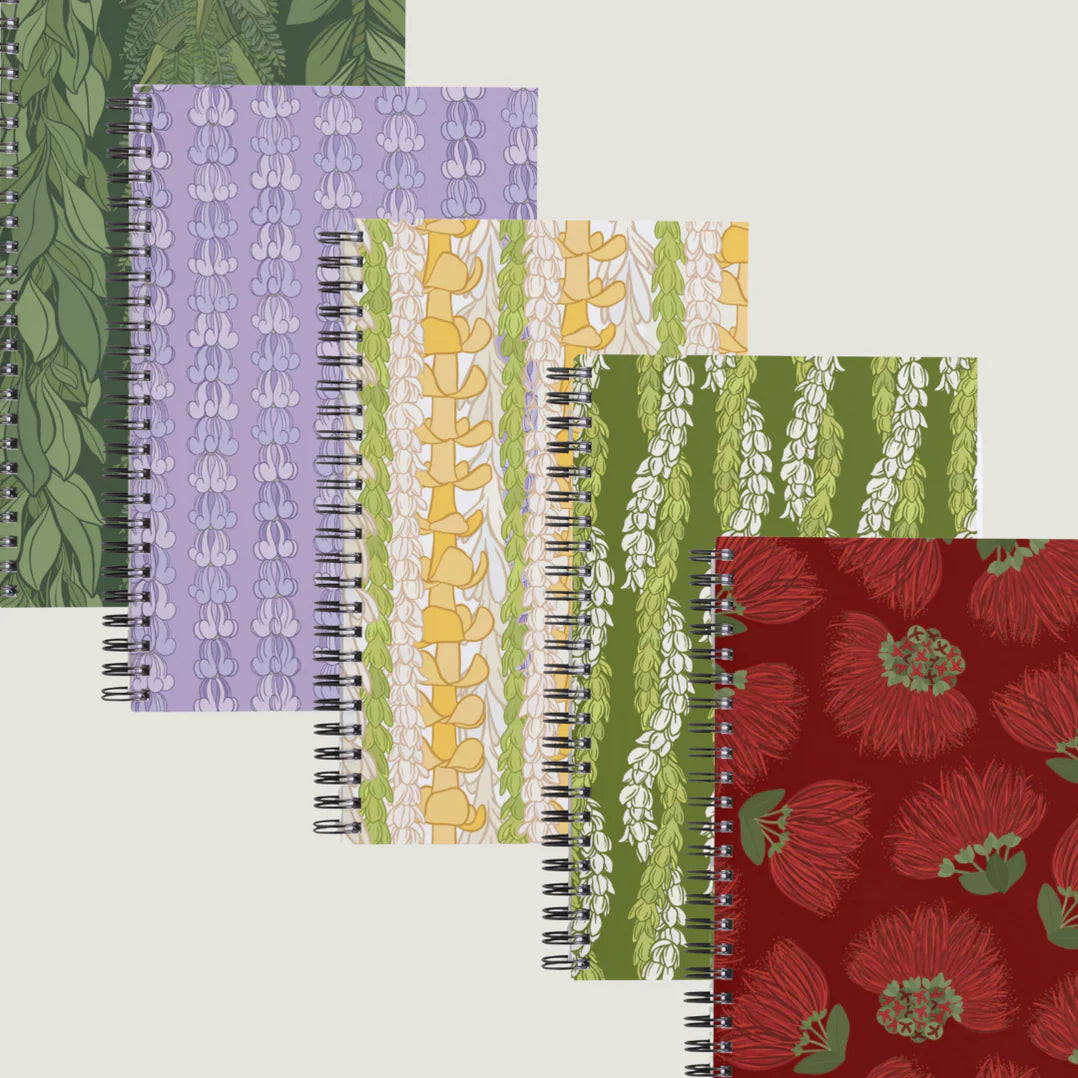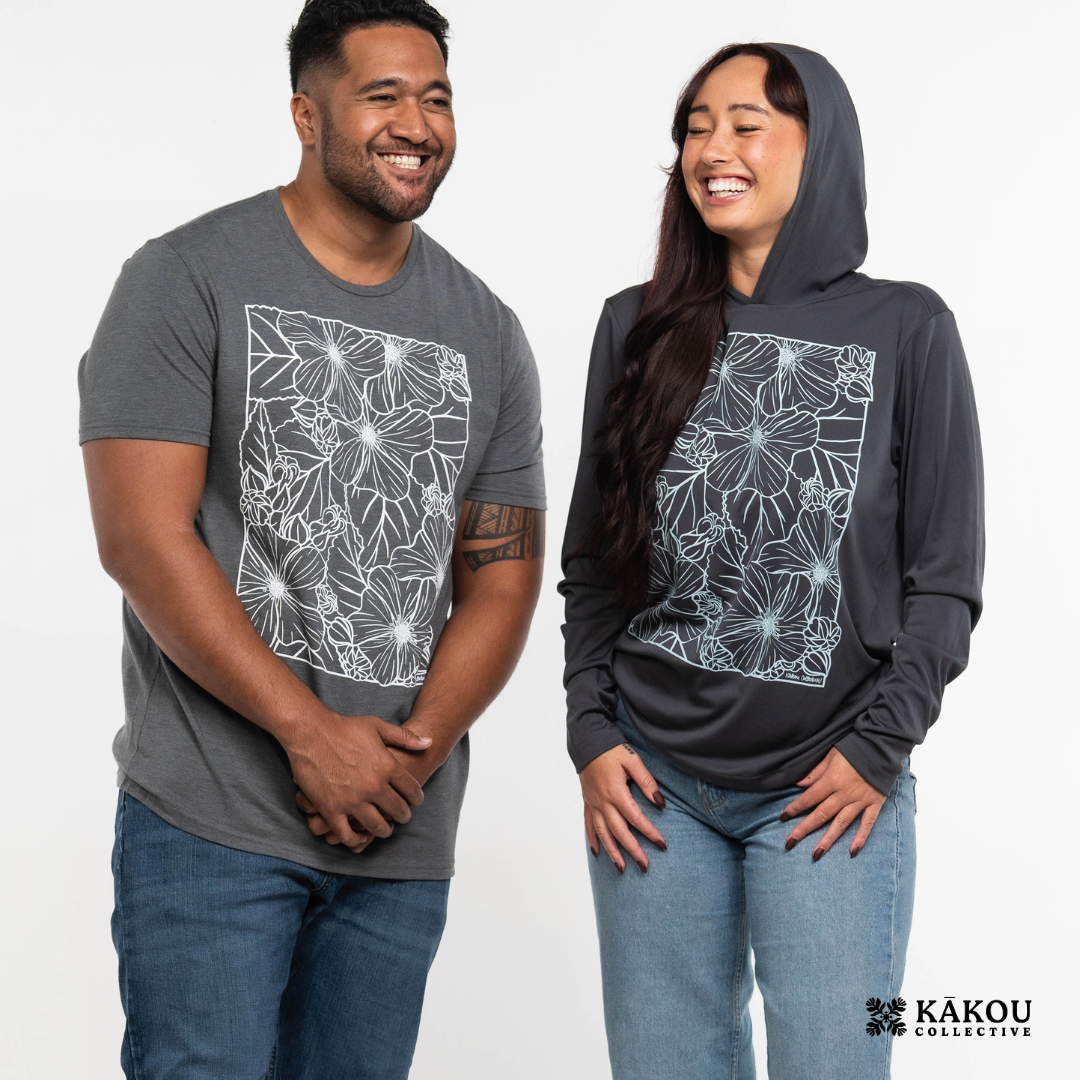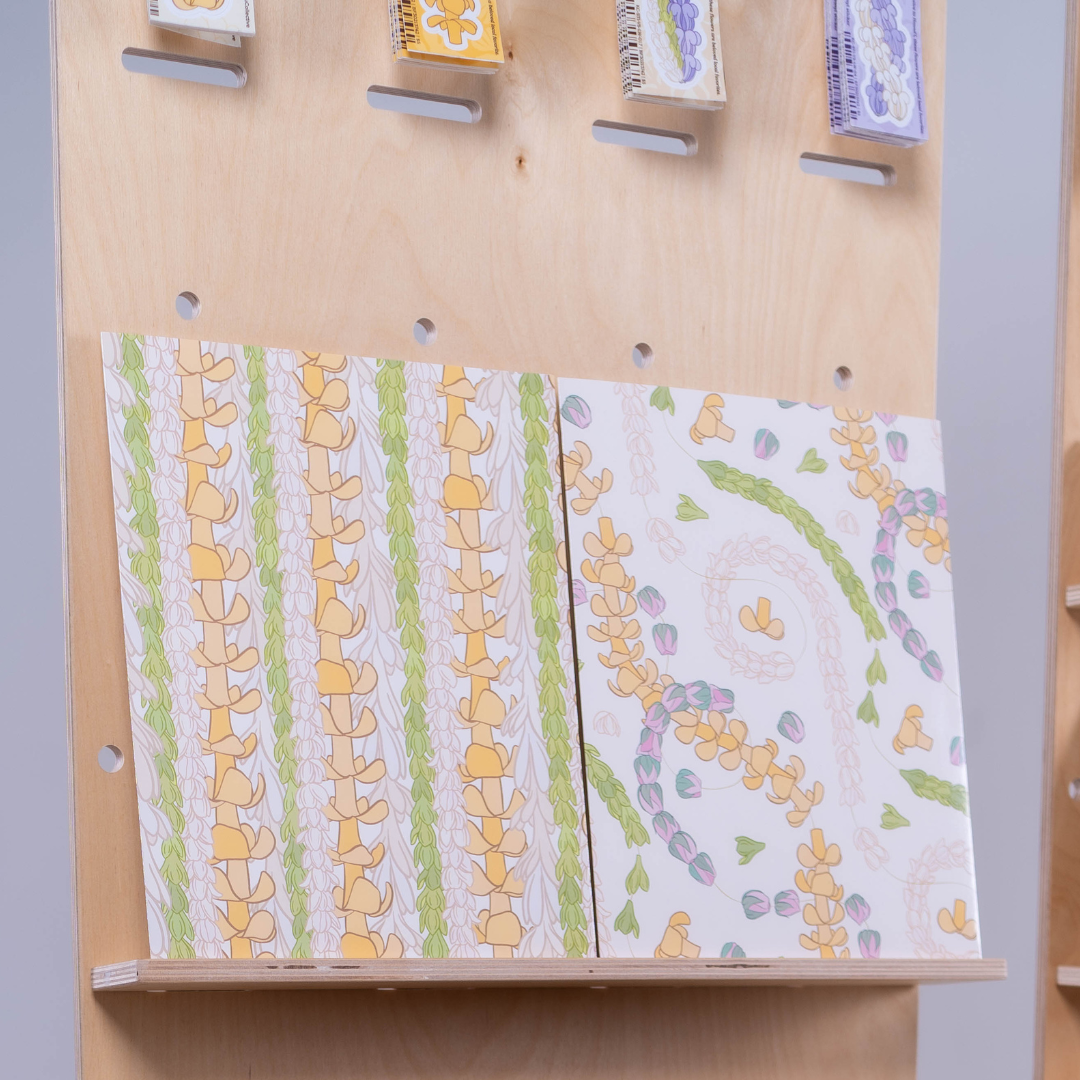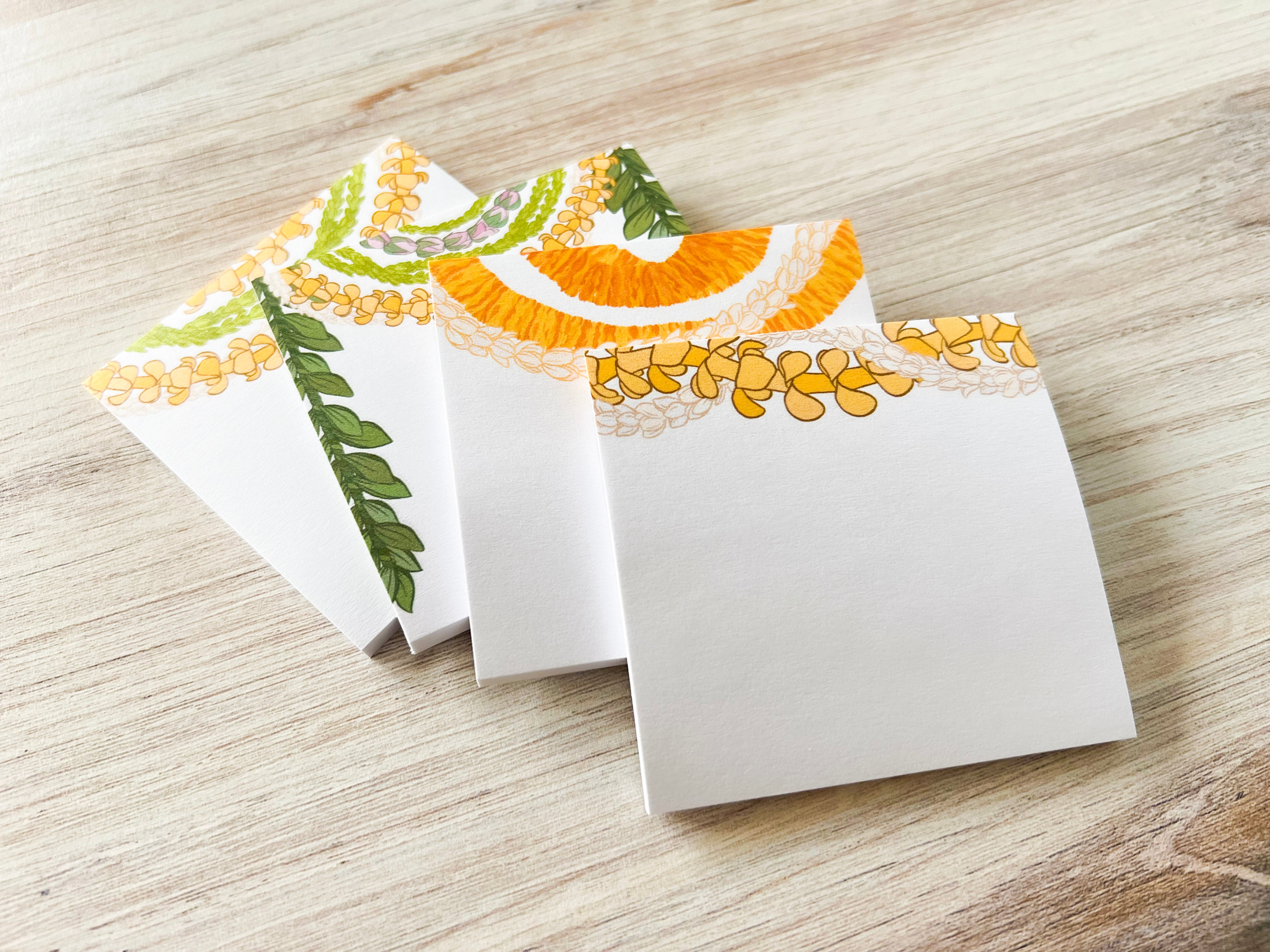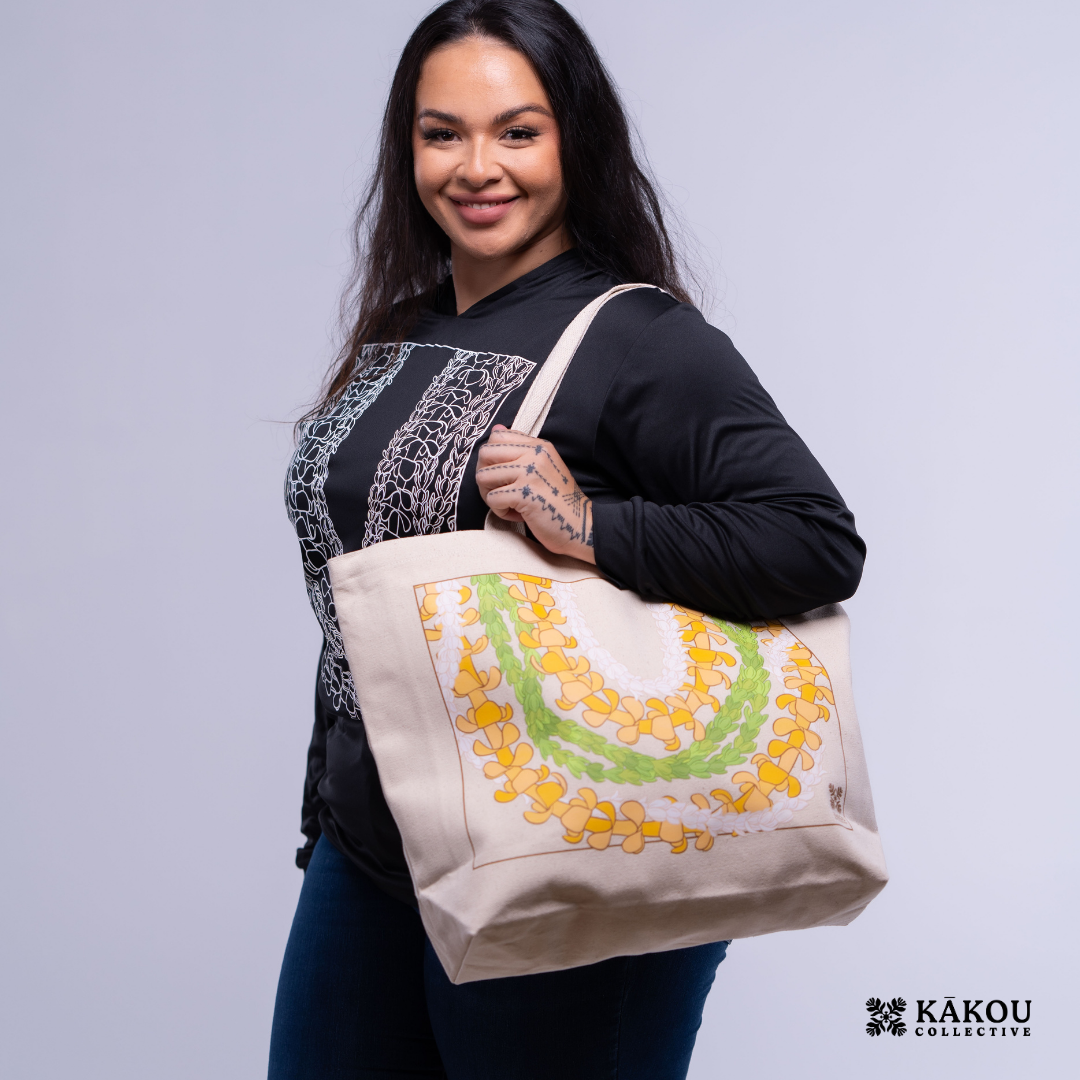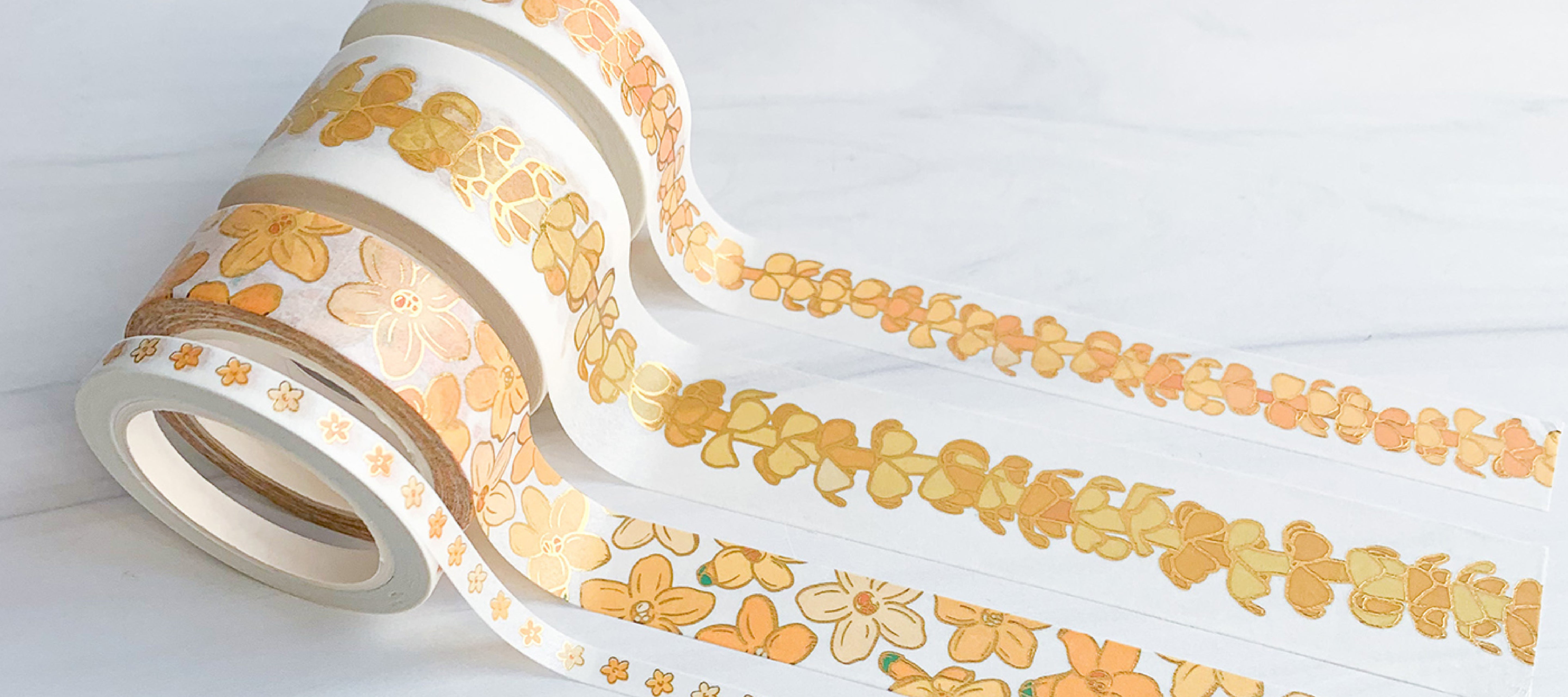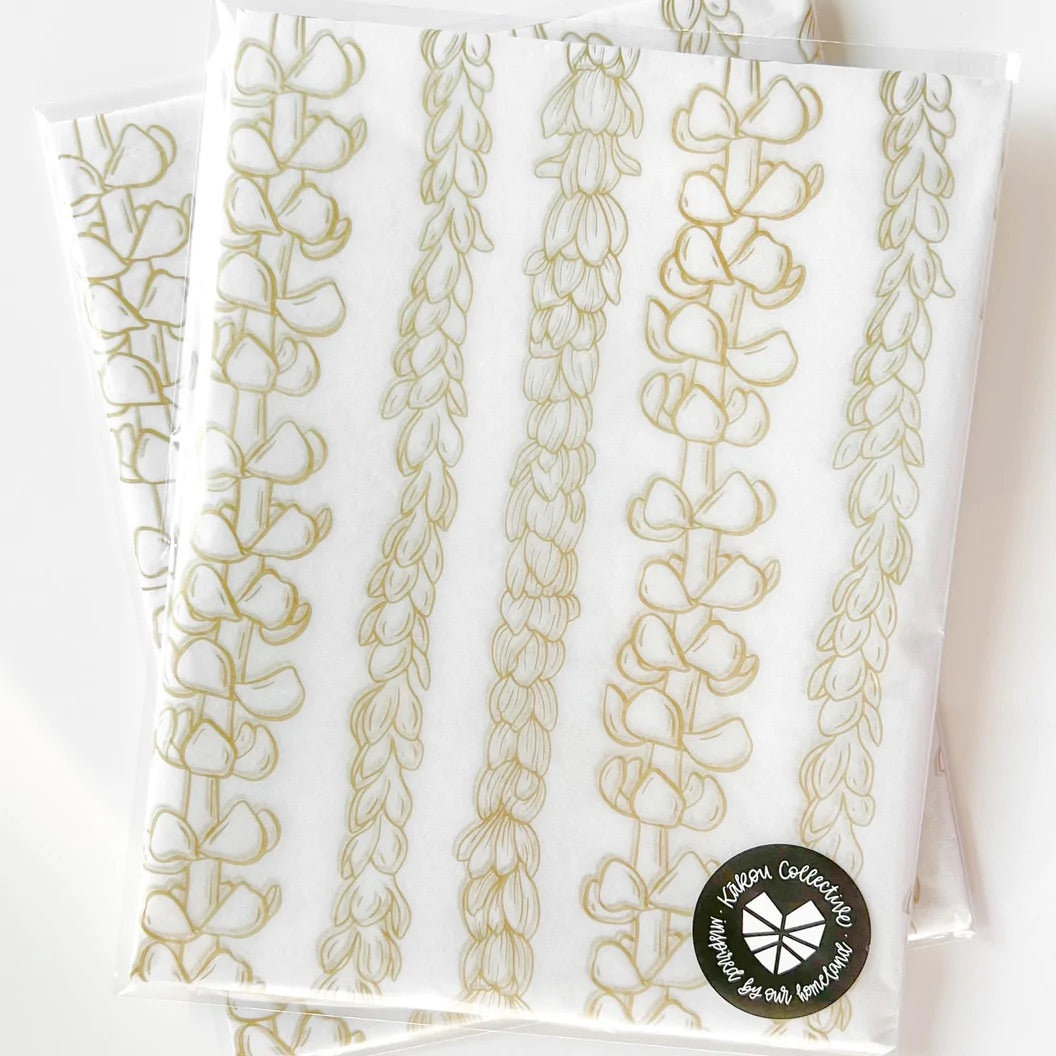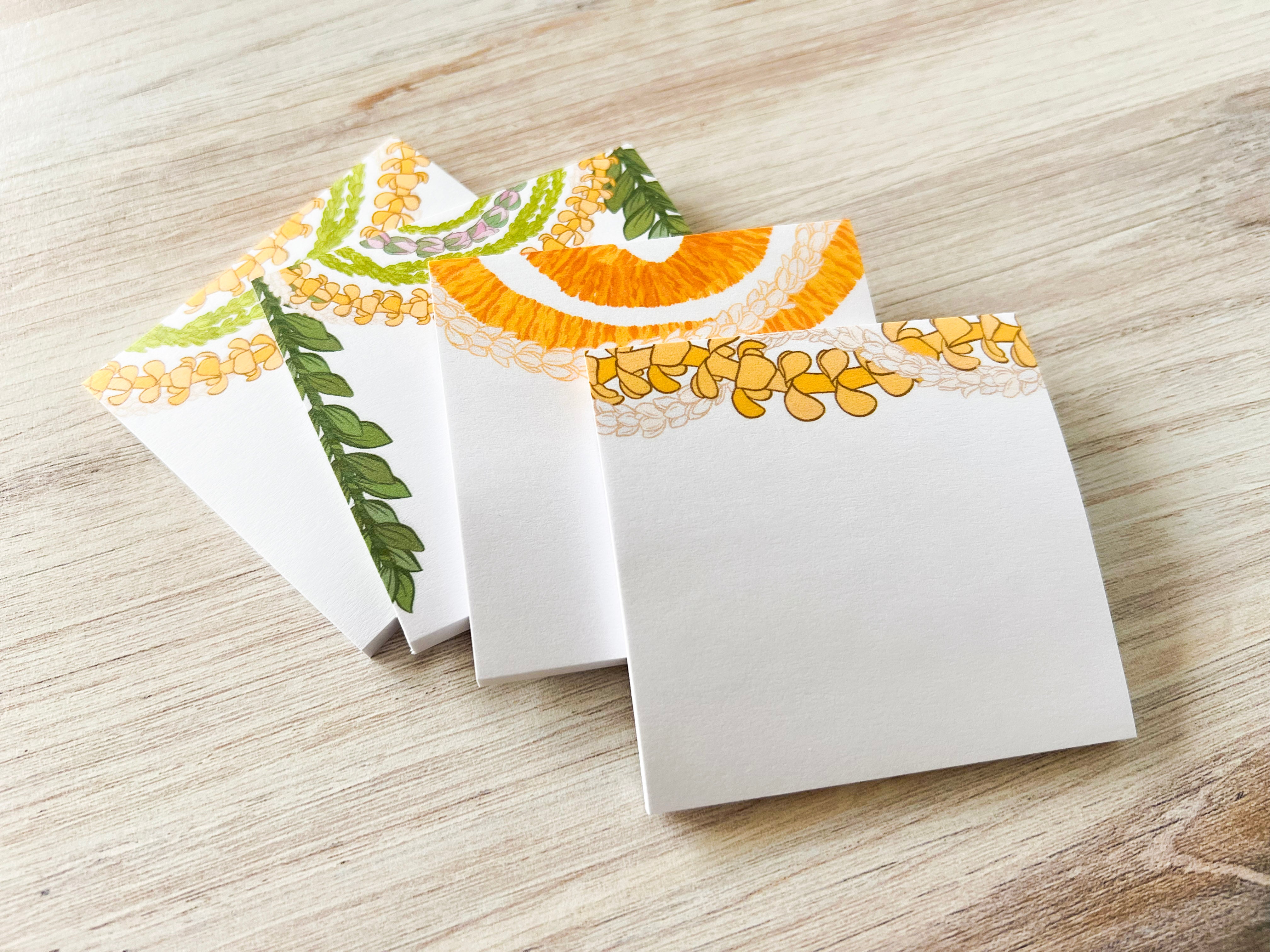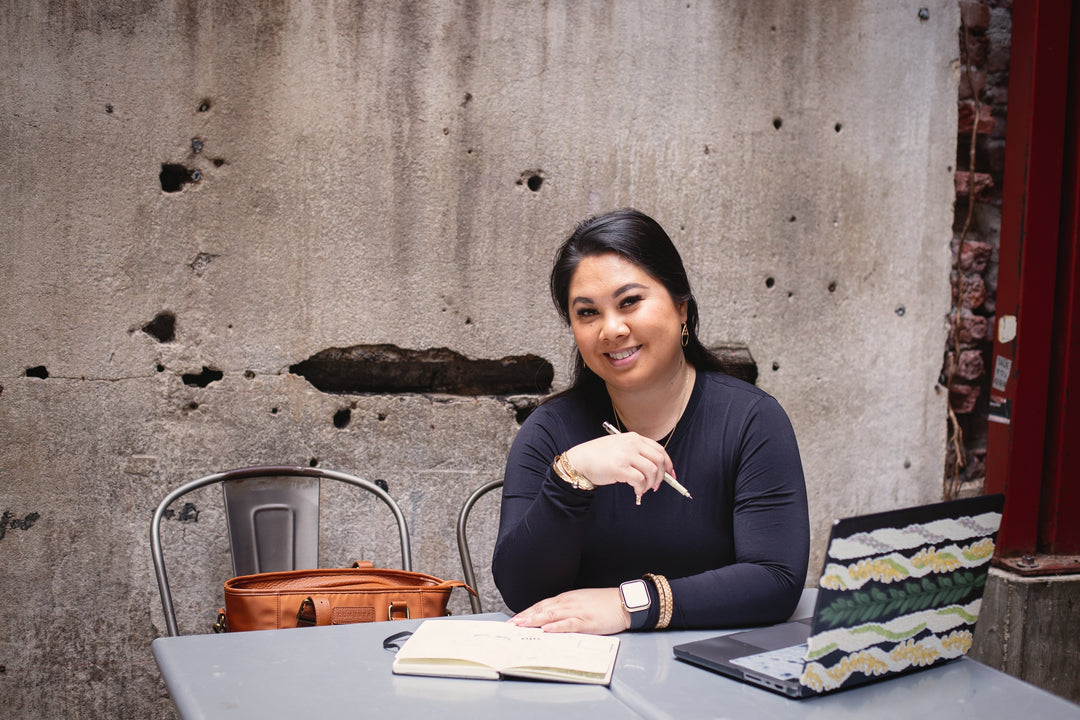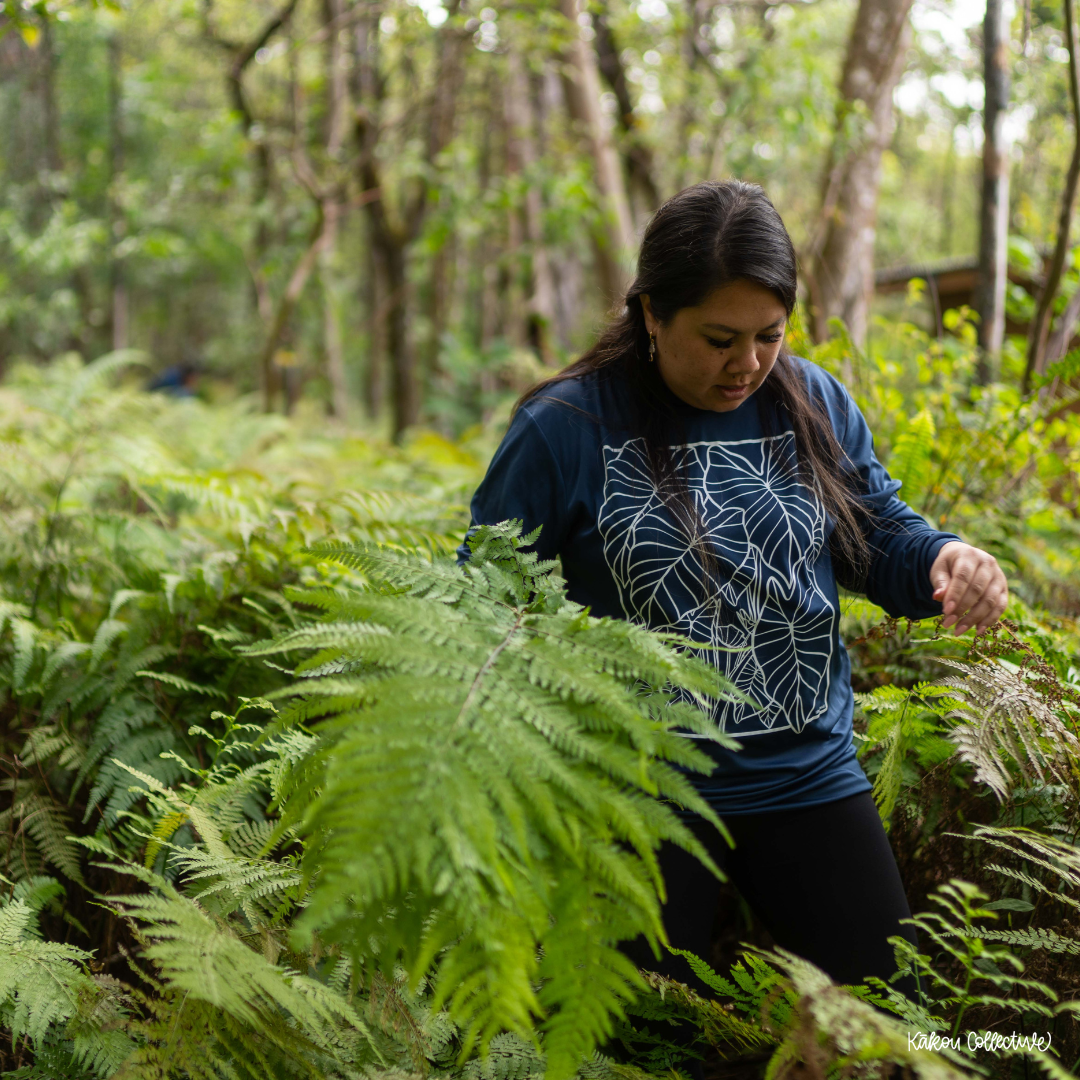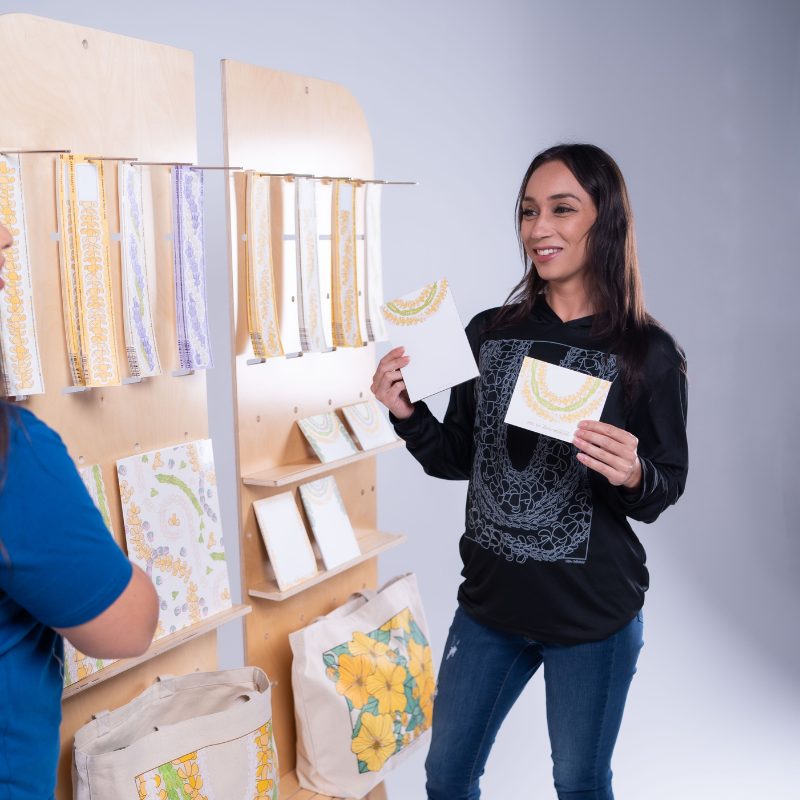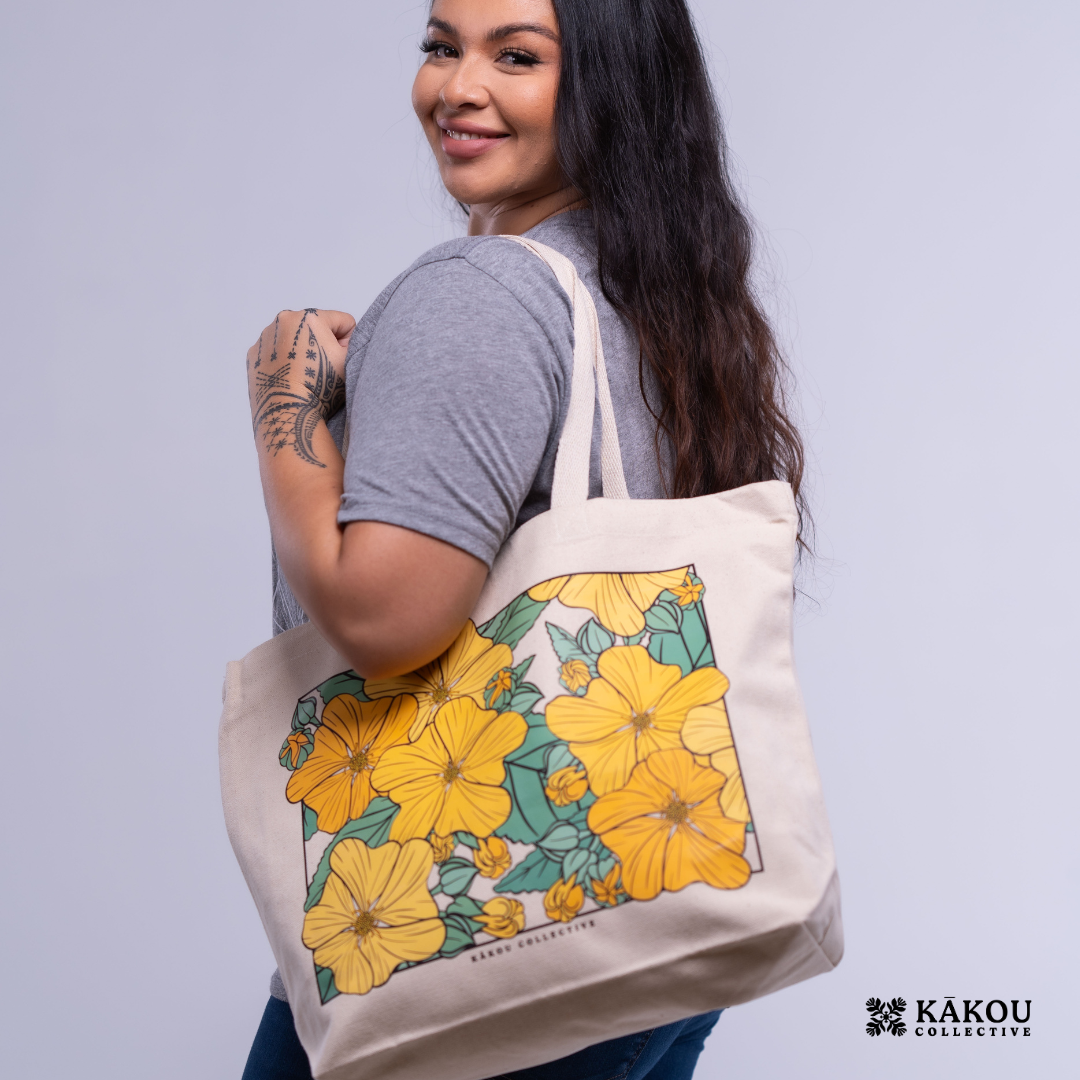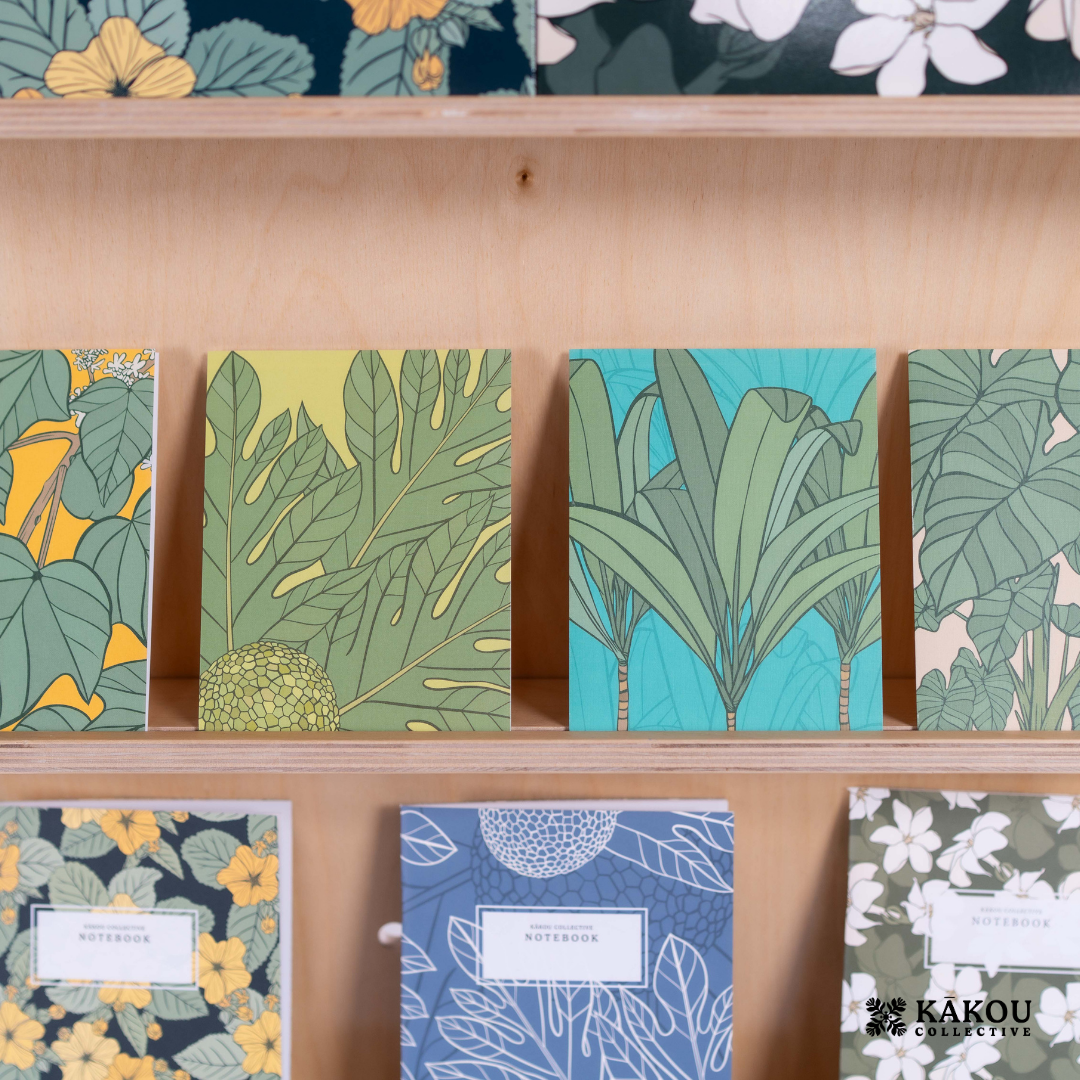Lehua Mamo: Honoring the Yellow ʻŌhiʻa
Lehua mamo refers to the rare yellow form of the ʻōhiʻa lehua (Metrosideros polymorpha), a native Hawaiian tree vital to island ecosystems. While most ʻōhiʻa are known for their bright red blossoms, the yellow variety — once associated with the prized feathers of the mamo bird — carries its own unique cultural significance, traditionally used in lei and other practices.
ʻŌhiʻa is one of the first plants to grow on new lava flows, creating conditions that allow other species to thrive. It captures mist and rainwater, nurtures the soil, prevents erosion, supports native wildlife, and helps replenish Hawaiʻi’s aquifers. Today, this keystone species faces a serious threat from Rapid ʻŌhiʻa Death (ROD), a fungal disease devastating ʻōhiʻa forests statewide. Its protection is a shared kuleana (responsibility) for all of us who depend on healthy ecosystems.
Our design celebrates lehua mamo by focusing on the liko (young reddish or green leaves) and ʻōpuʻu (buds), which represent growth, renewal, and resilience. These elements are reminders of how ʻōhiʻa supports regeneration in the land itself, symbolizing hope and connection. By highlighting these stages rather than the blossom, we honor the ʻōhiʻa’s role as a life-giving species and hope to inspire greater awareness and respect for its place in Hawaiʻi.
Next time you see our lehua mamo–inspired design, know that it reflects a deeper story of kuleana, conservation, and aloha for Hawaiʻi’s native forests.


